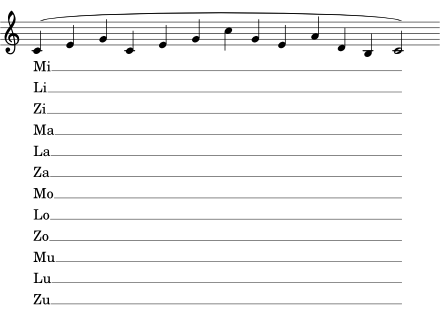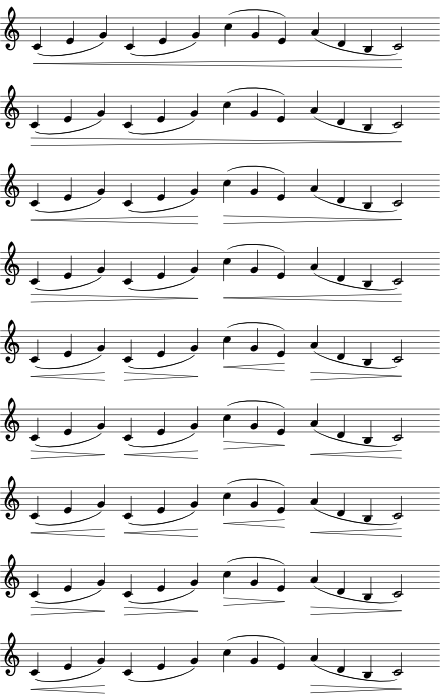Every so often you run into songs with tricky rhythms. It’s hard enough for you as the director to figure them out at home at your own pace, let alone expect your choir to pick it up on the spot. In this post I’ll discuss several strategies to help your singers more easily internalize the rhythm of a new piece of music.
Strategy 1: Say the Lyrics
Notice that’s say not sing. This enables the singers to focus on note length and leave figuring out the pitches for later. I know when I sightsing I have a tendency to give pitch more importance than rhythm, so the best way to make me concentrate on rhythm is to take out the pitches altogether, which this technique does. Saying the lyrics is particularly effective when the music is homophonic and minimally melismatic, that is all the parts have a similar rhythm and the song is mostly one word per syllable. The reason for this is that in homohponic, minimally melismatic pieces, you don’t have to worry too much about word crashing between parts or trying to say several notes with one syllable.
Now if it’s a polyphonic piece and you’re trying to figure out entrances, this technique also works because the singers can use the lyrics as an anchor for whether they are in the piece. Although you will have word crashing. This technique doesn’t work for highly melismatic or foreign language music. That’s what Strategy 2 is for.
Strategy 2: Assign Syllables to the Notes
If the song you’re singing has melismas or is in a foreign language which you’d rather not have butchered, but is still homophonic, speaking the song on a single syllable can work. That way every note of the melisma has a syllable attached to it. For songs in your native tongue and that are mostly homophonic with melismas you can combine the two strategies by saying the words when it’s one syllable per note and saying a specific syllable for the notes in a melisma.
This method is not good for singing polyphonic music though, because if you get lost it’s basically impossible to figure out where you are in the music. So lets say you have a foreign language polyphonic work. What do you do? You still have some options. You can “Solfeggify” the music, meaning make a copy of the music that has the solfege syllables written out for every voice part, and have your choir say the solfege. The syllables can then work as a fairly effective anchor. Another option is to still sing on a single syllable, but to work in small sections so that there isn’t enough time for the singers to get lost. A third option is to assign different syllables to different sections. For example, if the music has an A part and a B part, then you could sing one syllable for the A section and another for the B. That way you have a way to figure out where you are when you’re lost.
Clapping is another good technique to figure out the rhythm. You can have the singers clap instad of saying the words or syllables, or you can have them clap in addition to saying the word or syllables. I like clapping because it seems to help me and my singers feel the rhythm instead of just knowing it.
Should Rhythm Always Be Isolated Before Sight-Singing?
I think the best answer to this is, sometimes. If you think a new piece of music has a tricky rhythm, then having the choir work that out before singing it can be very effective for rapid learning. As I said earlier, when I sightsing my first tendency is to worry about the pitches and leave the rhythm for auto-pilot. Chances are you have at least a few singers in your choir that do the same thing. Working out the rhythm first can remind them just how important rhythm is and that when you actually know the rhythm, singing the pitches is a lot easier.
That being said, I wouldn’t do this for every new song. Moreover I wouldn’t do it for every song with tricky rhythm. Ideally you want your choir to be able to read the rhythm while looking over the music. So maybe with the first few songs with hard rhythms you could work them out using the above techniques. Once they start getting the hang of reading rhythms, you can have them work it out on their own.















